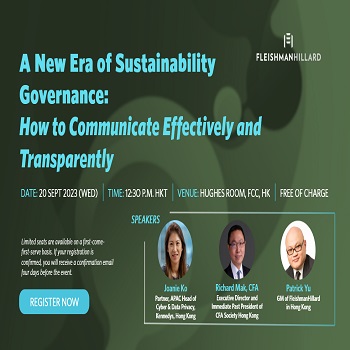StartmeupHK Festival 2019 - Day 3 Highlights Part 2
Retail’s Cutting Edge Returns to StartmeupHK Festival for 3rd Successful Year
2018 a good year for HK retailers; Asian consumer is No. 1 for coming years; Chinese tourists heading overseas to top 200m; experiential overtaking transactional in retail
The retail sector has long been a reason to be in Hong Kong, not just because the city is a shopper’s paradise but because the size, dynamic and responsiveness of the market make it a great place to try out new ideas and concepts.
One of the most popular StartmeupHK Festival events during the past couple of years, Retail’s Cutting Edge, hosted by Inside Retail Hong Kong, was back for the third year running.
For retailers, 2018 was a good year. Retail sales in the first 11 months grew 10% year-on-year to HK$450 billion, helped by double-digit growth in visitor arrivals to 58.6 million – also up 10%. And looking forward, the high-speed rail link and Hong Kong-Zhuhai-Macao Bridge will help give those from the Greater Bay Area greater access.

Yet there’s no room for complacency. Dr Jimmy Chiang, Associate Director-General at Invest Hong Kong, in a welcome message, said: “Though Hong Kong’s retail market is robust at this moment, competition is keen, industry players need to innovate to stay relevant to provide customers with the best experience.”
Beside emphasising the Hong Kong government’s commitment to maintaining a low-tax business friendly environment, Dr. Chiang made some interesting observations on current trends.
“There’s a lot more that retailers can do to service the growing Muslim market,” he said. “The current Muslim market population is 1.6 billion, nearly a quarter of the world’s total population, of which 60% live in Asia. That number will reach 2.2 billion by 2030.”
Reflecting on one of the key underlying themes of StartmeupHK Festival, social impact, he also noted: “Consumers are increasingly concerned that the things they eat and use are produced in a socially responsible way. Are we doing enough to cater to their needs and address their concerns?”
Retailers worldwide need to adapt to Asian tastes

Dustin Jones, MD, Brand Accelerator with Fung Retailing Group, launched a website to ship clothing overseas cheaply when he was twenty. He told his story working with Macy’s and in the internet space in the US, through to launching Macy’s China with the Fung Group and Alibaba.
When a business slowdown caused Macy’s to pause its China operations, Mr. Jones said that, Instead of going home with Macy’s, he and Alibaba and Fung started the company ARC.
ARC offers one-stop access to everything brands need to enter China. They can leverage its vast resources to help western brands accelerate growth and reduce risk in Asia. ARC tells you “how to enter, where to sell, what to sell and who to partner with,” he said. “ARC offers brands a single communication point, gives them (brands) a team. ARC is a management partner.”
Commenting on where the future lies, Mr. Jones said: “The Asian-based consumer is key to future growth of global brands,” meaning retailers need to adapt to meet Asian tastes. “By 2020, China is expected to be the No. 1 global contributor to outbound travel with 200 million tourists going overseas,” meaning that the need to adapt isn’t just a message for Asia.
Creating hybrid models

Pascal Martin, Partner at OC&C Strategy Consultants, spoke about new retail trends and their implications in Hong Kong. He said that “the online giants are investing in traditional retailers, transforming them into hybrid models.” Bricks-and-mortar stores saw a bounce back to boost overall retail growth in Hong Kong. “Next is China,” he said.
Mr. Martin talked about the online-to-offline (O2O) shopping experience, or new retail. Hema is Alibaba’s “New Retail” flagship and laboratory, a O2O experience offering a new combined shopping occasion using technology and data to provide an improved experience. “The model is very successful and poses a threat to traditional retailers,” he said. “Their conversion rates are extremely high.”
He said that Hema’s profitability and sustainability are yet to be proven. “The offline performance is average; Hema is dependent on its online business,” he said. “Overall profitability is very challenging with high rent for a store that is in a traditional retail area downtown, but with half warehouse space. There are also high staffing costs for front- and back-end operations.”
Mr. Martin’s four key lessons for retailers:
- Think customer, not channel
- Reinforce your distinctiveness
- Organise around speed and accountability
- Partner to win
“Hema was developed after thinking deeply about consumer needs; this is not done enough,” he said. “If you don’t think consumer first, you are likely to be influenced by people who are just selling technology to you.” He continued: “Be very clear about what pain point you want to address and what you want to do for the consumer before getting into a new retail concept.”
Customer experience is critical

The day rounded off with David Bell, President, Idea Farm Ventures, who said that offline has never been more important. “’Retail gravity’ is a theory from the 1930s that people make buying decisions based on how far they have to travel to get the thing,” he said. “Location, location, location –not the location of the store, but the location of the customer.” He added that “birds of a feather flock together.”
He presented Warby Parker as a case study. “Warby Parker is a verb – to bring down the price, to increase quality and bring to the customer in a seamless way.” Mr. Bell said that Warby Parker stores are “the third highest grossing behind Apple and Tiffany in the US.”
If a brand has an offline experience with a person, the subsequent online experiences are more nuanced and intimate because they’ve had that initial offline touchpoint. “Once a customer has had an offline experience with a brand, the return rate goes down with all online-offline experiences thereafter, and the return rate for the expensive items goes down even more.”
Mr. Bell’s key takeaways:
- Location has evolved – think about location of activities to create a holistic customer experience
- Acquiring information online and fulfillment offline creates a deeper intimacy with customer
Great retailers are getting smaller, more interesting, more experiential and less transactional.


